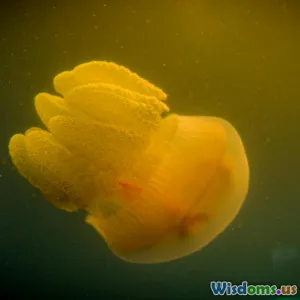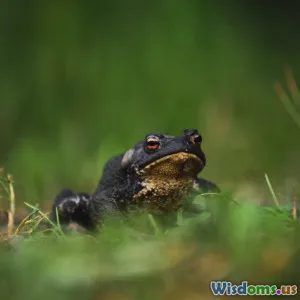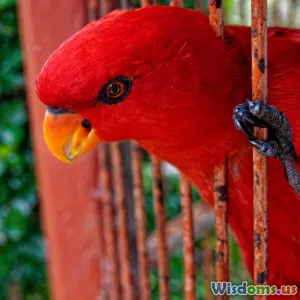
The Unseen Forces Behind Animal Evolution
7 min read Explore the hidden drivers of animal evolution shaping biodiversity beyond natural selection. (0 Reviews)
The Unseen Forces Behind Animal Evolution
Evolution is often distilled down to Darwinian natural selection—the survival of the fittest. Yet, this monumental process shaping the animal kingdom involves much more beneath the surface. While natural selection undoubtedly directs the adaptation and diversification of species, many other subtle and complex forces contribute to the incredible tapestry of animal evolution. These unseen influences challenge traditional perspectives and deepen our understanding of biological change.
Rethinking Evolution Beyond Natural Selection
Charles Darwin's insight laid the foundation for evolutionary biology, but even he acknowledged that natural selection was just part of a complex picture. Over the last century, emerging scientific discoveries have revealed that evolution is driven by mechanisms far beyond genetic mutations and survival pressures.
1. The Role of Epigenetics: Inherited Environmental Imprints
Epigenetics refers to heritable changes in gene expression that do not involve alterations to the DNA sequence itself. These changes can be triggered by environmental factors such as diet, stress, or toxins, and they provide a rapid-response system for organisms to adapt without waiting for slow genetic mutations.
For example, in the water flea Daphnia, exposure to predators can trigger epigenetic changes leading to the development of protective helmets and spines in offspring. These traits can persist across generations even without the original environmental stimulus. This suggests an additional evolutionary layer where traits adapt swiftly, reversing or amplifying genetic potential based on experiences.
2. Genetic Drift and Founder Effects: Evolution by Chance
Not all evolutionary change is a product of adaptive selection. Genetic drift—the random fluctuation of gene variants in populations—and founder effects, where new populations start from a small number of individuals, can drastically alter species' gene pools independent of fitness.
Consider the northern elephant seal. Hunters decimated its population to around 20 individuals in the late 1800s, but it rebounded to over 150,000 today. However, the limited genetic diversity due to the founder effect has elevated susceptibility to disease, illustrating how chance and population bottlenecks influence species' evolutionary trajectories.
3. Symbiosis and Horizontal Gene Transfer: Evolution from Cooperation
Traditionally, evolution has been viewed through the lens of competition, but cooperation plays an equally critical role. Symbiotic relationships—where different species live in close association—can drive evolution by exchanging genes or offering new survival strategies.
A stunning example is the origin of mitochondria and chloroplasts in animal and plant cells, respectively. These organelles originated from ancient symbiotic bacteria integrating into eukaryotic cells, dramatically enhancing cellular efficiency and complexity.
Horizontal gene transfer (HGT), though more common in microbes, has been increasingly documented in animals, allowing genes to move between species. For instance, some insects have acquired bacterial genes that help them digest tough plant material, reflecting an evolutionary shortcut spurred by cooperation rather than slow mutation.
4. Environmental Catalysts: Beyond the Organism
The environment is far from a static stage; it's a dynamic player shaping evolutionary paths. Climate change, habitat shifts, geological upheavals, and even cosmic events have left indelible marks on animal evolution.
The Cretaceous-Paleogene extinction event 66 million years ago, likely triggered by an asteroid impact, wiped out roughly 75% of Earth's species, including the non-avian dinosaurs. This catastrophic disruption enabled mammals to diversify and eventually give rise to humans. Such large-scale environmental forces disrupt evolutionary trajectories, creating opportunities for rapid diversification or sudden extinction.
5. Developmental Plasticity: Flexibility in Form and Function
Phenotypic plasticity—the ability of an organism to change its morphology or behavior in response to environmental conditions—can also drive evolutionary innovation. Through developmental plasticity, animals can exhibit different traits without genetic change, potentially allowing populations to bridge harsh environments or novel niches.
The Arctic fox showcases this adaptability elegantly: their thick summer fur turns brown, and then thick white in winter, providing camouflage. When environment shifts apply pressure, these flexible traits can become genetically assimilated over time, leading to long-term evolutionary change.
Insights from Modern Research and Impact on Biodiversity Studies
Scientists now leverage genome sequencing, epigenomics, and ecological modeling to decode these hidden evolutionary forces. Notably, epigenomic research is unveiling transgenerational effects that may help species adapt swiftly to rapid climate change, offering hope for conservation biology.
Richard Lenski’s famous long-term E. coli experiment demonstrates real-time evolutionary processes, including rare horizontal gene transfers and drift phenomena, challenging conventional wisdom.
Furthermore, researchers emphasize that safeguarding biodiversity requires acknowledging these unseen processes. Conservation strategies are evolving to protect not just species, but also the environmental and symbiotic contexts enabling evolutionary flexibility.
Conclusion: Embracing Complexity in Evolutionary Biology
Animal evolution is a complex interplay of visible and invisible forces—genes and environment, competition and cooperation, chance and necessity. Understanding the unseen forces like epigenetics, symbiosis, genetic drift, and environmental catalysts reveals a richer, more nuanced picture of how life diversifies and persists.
Recognizing these hidden influences pushes us to broaden our evolutionary narratives beyond simple survival, highlighting adaptability, connection, and dynamism. This expanded awareness not only deepens scientific insight but also underscores the urgency to protect the delicate balance sustaining Earth’s biodiversity in a fast-changing world.
In a world facing unprecedented environmental shifts, appreciating these unseen evolutionary forces empowers us to foster resilience in the animal kingdom for generations to come.
Rate the Post
User Reviews
Popular Posts




















